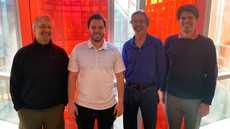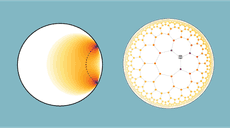Przemyslaw Bienias
Quantum Research Scientist at AWS. Former postdoctoral researcher.
Research ScientistAlumni

Contact Information
- Email:
- bienias@umd.edu
- Office:
2126
Additional Info
- Research Profile
- View Profile
About
Research Areas:
Polar molecules, magnetic atoms, and other dipolar systems
Strongly interacting photons
Topological matter in AMO systems
Driven-dissipative systems
Alkaline-earth atoms
Bio: Where are they now?:
Quantum Research Scientist at AWS. Former postdoctoral researcher.
Research Groups
JQI
QuICS
Recent Publications
Experimental Roadmap for Optimal State Transfer and Entanglement Generation in Power-Law Systems
, , arXiv:2402.07974, (2024)Guo et al_2024_Experimental roadmap for optimal state transfer and entanglement generation in.pdfImproved Digital Quantum Simulation by Non-Unitary Channels
, , arXiv:2307.13028 [quant-ph], (2023)Gong et al_2023_Improved Digital Quantum Simulation by Non-Unitary Channels.pdfCircuit Quantum Electrodynamics in Hyperbolic Space: From Photon Bound States to Frustrated Spin Models
, , Physical Review Letters, 128, (2022)bienias22.pdfbienias22supp.pdf
Recent News
![Four men stand in a row in front of alternating white and red windows.]()
![Technical graphic composed of two white dots on a blue-green background. The left dot shows a gradient from black to light yellow. A dotted line forms a semicircle connecting the two black dots on the edge of the white dot. The right white dot is filled with a hexagonal grid. The hexagons git smaller the further they are from the center of the dot. Each vertex of the hexagons is a colored dot with the ones near a larger grey dot being purple and the rest fading to yellow the further away they are.]()
Enhancing Simulations of Curved Space with Qubits
January 18, 2022![]()
Two (Photons) is Company, Three’s a Crowd
April 26, 2021


